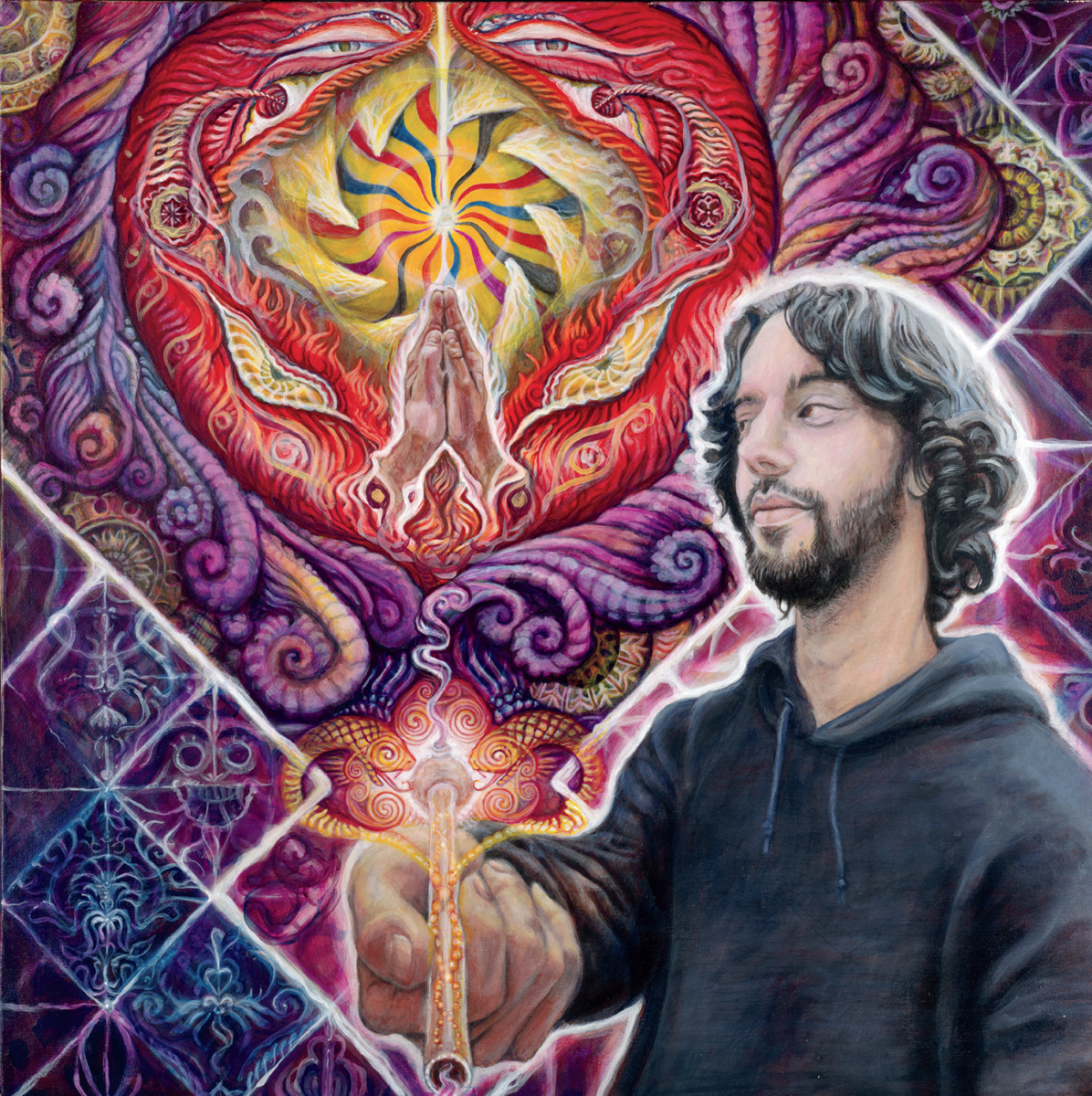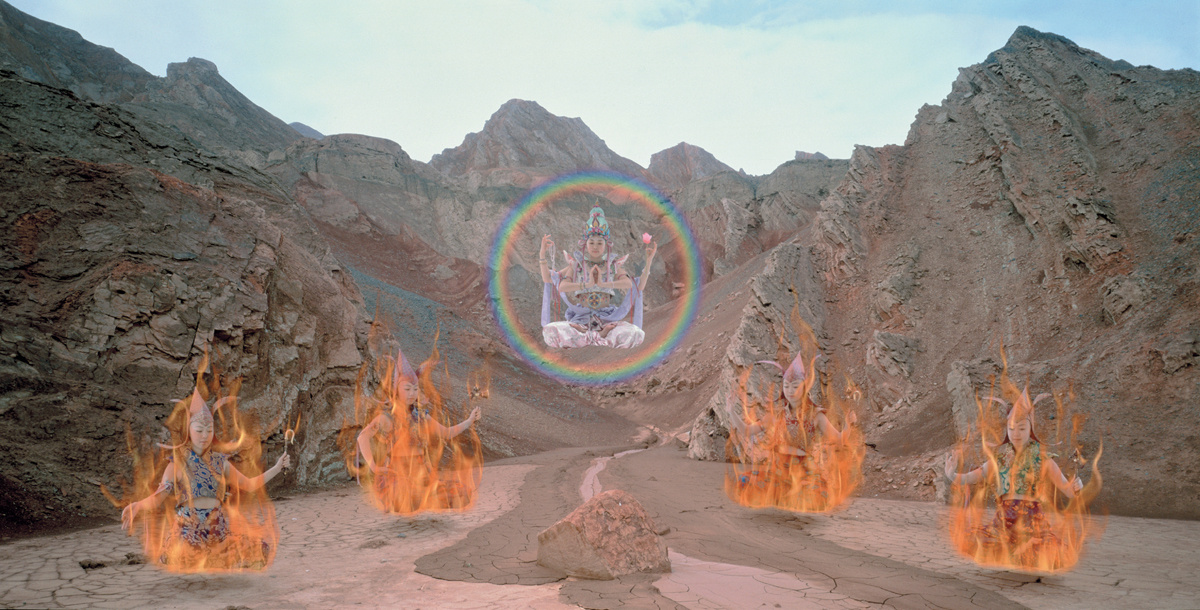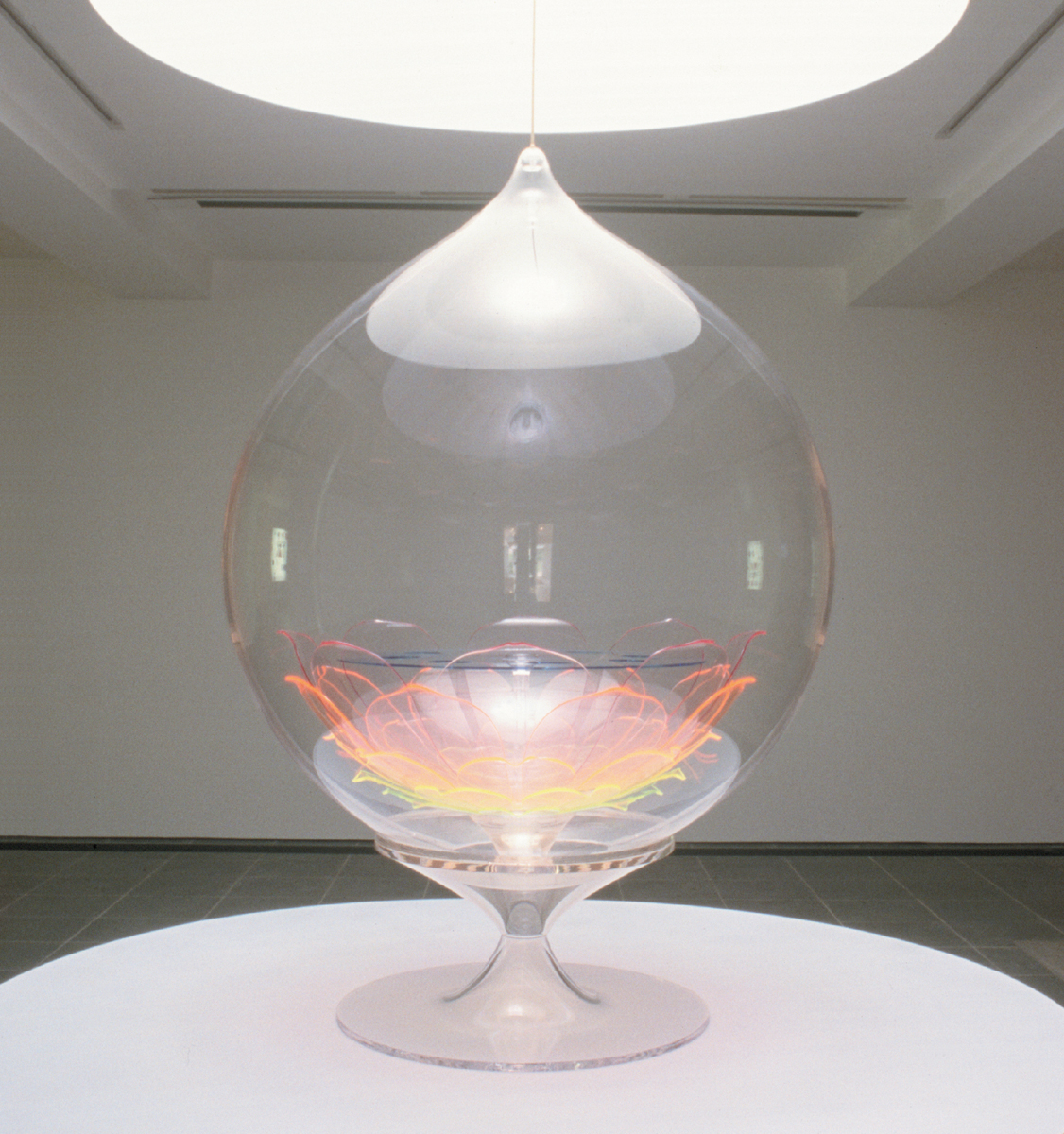RELATIVE TRUTH  Brigid Meier
Brigid Meier
MY FIRST PLANT MEDICINE EXPERIENCE was in 1974. I asked the Vidyadhara Chogyam Trungpa Rinpoche what he thought about me taking some of the many fresh peyote buttons circulating around Boulder that summer. “If you’re going to do it, do it right,” he admonished me in his Oxonian accent. I took that to mean that I should investigate how peyote is used traditionally as a sacrament, as a tool for awakening. I did this to the best of my ability; I fasted, meditated, and prayed—and created a supportive, safe setting. My set—what I brought to the experience—was an eclectic mix of reverence, curiosity, warriorship, and leftover beatnik/poetic anarchism. My intention was undoubtedly influenced by having read Carlos Castaneda and resonating with Don Juan Matus’s proclamation that “peyote could teach you the right way to live.”
It was with a similar inquiry that almost twenty years later I returned every six months for three years to a sacred plant medicine circle. I apprenticed to the realm of plant medicines to seek teachings from a stratum of nonhuman consciousness in order to open to the direct felt experience of Gaia, to the experiential knowing, not simply the insight, of the interdependence of all beings.
Despite not attending the circle for the past several years, it remains my belief that sacred plants, as a frequency of planetary intelligence, have offered themselves as emissaries from the increasingly ravaged natural world. Their intention seems to be to get inside and convert as many mobile humans as possible—a critical mass—in order to do their subversive work of infiltrating then dismantling the cancerous human ego that is destroying the planet and their ecosystem. This notion feels intuitively accurate—the organism of the Earth is healing itself, coming into balance in a state of being that is not focused on human history and human culture. As one whose heart and soul are aligned with this evolutionary mission, I feel that having had the opportunity to scrape some accumulated barnacles of mass consciousness off my psychic boat was a profound blessing. The medicines’ teachings became another “turning of the wheel” of wisdom—an invitation to become a member of the sangha of ALL beings, not only of a human-centric universe. The message of genuine interdependence and empathy that the medicines impart—in their multidimensionally holographic way—seems to be utterly specific to the living spirits of the beings—the plant people, the rock people, the tree people, the devas—of each bioregion. The medicines allow one to finally hear the voices of one’s neighbors—on every level—all my relations. I found that Buddhism and native wisdom often vector in the plant medicine experience. And the gestalt of “Buddhism”—moment to moment enlightenment of “what is” beyond grasping—came alive for me in a way that was surely once accessed through the shamanic use of plants or fungi in the early Vedic era.
The real work, with both meditation practice and the use of plant substances, is to transmute the grace and insight received into compassionate, skillful action in one’s ordinary life. Neither discipline on its own has made me a more generous person. Nor do they do my work for me—they both simply point toward what needs to be done. I have experienced meditation and plant substances as each having its own morphogenetic field which rises up to meet me the deeper and more committed I venture. I’ve encountered beings from many realms throughout time that have preceded me, who’ve invited me to tap into their experiences and insights. They can become a lineage and a transmission to impart if one chooses to follow. The task, as always, is to navigate the sea of awareness—Mind!—which unfolds ceaselessly in the present moment. And there’s a way in which medicine practice, like meditation practice, feels like preparation for death. One simply cannot hold on and proceed at the same time. Every time I journeyed I ran into Trungpa Rinpoche out there in hyperspace and he asked me, “Are you having fun, sweetheart?” or “What do you think you’re doing now?” The truth of No Escape holds up—the guru is everywhere—inextricably lodged in the practitioner’s Being.
But like anything else, taking plant medicines indiscriminately and carelessly can become a frivolous trip—fertile ground for ego to form. It can be a fairly dangerous trip; people get stuck for years in what Ken Wilber calls “the green meme.” It is crucial to have a qualified guide, one who is experienced and who is also impeccable. The best guides admit they know nothing themselves and have no desire to lay a trip on you; they simply create a safe, mindful set and setting conducive to further awakening. They are more like midwives gently encouraging you to explore and/or release while possessing the knowledge of how to perform psychic triage should the need arise. These guides have unfathomable trust in the medicines, in the sincere seeker, and in the spirits to create a sacred healing alchemy for the highest good.

HARMONY OF THE DRAGONS Android Jones, 2012

DHARMA DRAGON Android Jones, 2012

DIVINE MESSENGER OF TRUTH Randal Roberts, 2007

BURNING DESIRE Mariko Mori, 1998

ENLIGHTENMENT CAPSULE Mariko Mori, 1996-1998
The first formal medicine circle I attended was held over a weekend during the early nineties at a remote New Mexico setting in a zendo-like hall complete with zafus and a candle shrine to the four directions in the center of the room. After setting our intentions for healing and vision, then sharing them with each other on Friday night, all twelve of us participants spent Saturday alone, fasting outdoors, opening to nature. Saturday night we each took the medicine we felt more aligned with. We were offered the choice of ayahuasca, psilocybin mushrooms, San Pedro cactus, or iboga root. Alignment was determined by many factors but primarily it had to do with which axis on the medicine wheel you felt you were on at the time, which energy you most wanted to connect with. Mushrooms, called “the little children” by the Mazatec curandera, Maria Sabina, were in the east and were taken to invoke new beginnings. Ayahuasca, a powerful rainforest concoction which activates the lower chakras or primal instinctual energy, was in the west and was taken in order to let go of what is no longer needed. Iboga, a root from Africa, held the northern position and is taken to invoke the ancestors or masculine energy. San Pedro cactus from South America is in the south and represents rejuvenating, nurturing feminine energy. This is a loosely constructed schema but it seems to hold up energetically.
Saturday evening we gathered in the meditation hall, invoked the plant, animal, and ancestor spirits and the spirits of the earth. Then we each took our respective medicines. For several hours we alternated lying down, heads toward the center shrine, led verbally by the guide and having time to be with our own individual experiences. We then sat up and passed a staff and sang our journeys. We did this sequence three times. It was an extraordinary combination of personal biographical exploration, a guided archetypal journey, and the retrieval of information relating to our intention which we brought back to the collective. Because everybody’s ass was on the line, there was an incredible atmosphere of unconditional love for each person’s courage to be psychically unmasked before the group. A feeling of true sangha flowed throughout my experience, something I had not been able to find during all those years of practicing at different Buddhist centers.
On that particular journey I tried ayahuasca for the first time. My life was at a crossroads and I was feeling as if the wind had gone out of my sails; on many levels I was ambivalent about life. Ayahuasca most assuredly cut through that conceit in a hurry and I got my butt kicked by the ruthlessly uncompromising love of the plant spirits. I experienced the same quantum leap in consciousness with ayahuasca as I did when I first took LSD in San Francisco, 1967. I had the same infusion of gratitude to be alive and a similar certainty that “my world will never be the same.”
Although they can sometimes be heavy-handed, many journeyers appreciate the tryptamines—mushrooms, ayahuasca, DMT—for the visual hallucinations they elicit. I found the phenethylamines—San Pedro cactus and peyote—to be true teachers for my particular biochemistry and spiritual inclinations—less form, more emptiness, perhaps.
San Pedro has an uncanny ability to impart its wisdom in a particularly gentle yet firmly ineluctable way. I did a painting of a San Pedro journey I had in the circle depicting myself being held in the loving hands of Our Lady of Guadalupe, who feels to me like the Western hemisphere’s Kuanyin or Green Tara. During the journey, which I experienced as deep waves of energy coming up from the earth and through my belly, I felt as if I was being shown, in innumerable ways, how the specificities of my life are not separate from the perennial teachings—how my life lessons are exquisitely “tailored” for me but are simultaneously universal. All this was revealed with profound love for how human I am. It felt like a direct encounter with Gaia, the mother, the earth, offering her child healing on a cellular level—the Relative Truth of the biological substrate of compassion: deoxyribonucleic acid—DNA as Prajnaparamita.